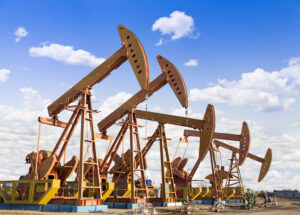by: Jonathan Cogwell
In the Oil and Gas field many technical advancements have been made in the industry. Wireless Sensors that are connected to wireless networks are available for many applications. These networks are called Wireless sensor networks.
Wireless sensor networks (WSN), defined as a self-configured and infrastructure-less system to monitor physical or environmental conditions, have become crucial to the oil and gas, energy exploration, and petrochemical industries. In the Oil & Gas sector, potential damages or impairments are directly connected not only to the safety of valuable assets, but to human operators as well. By providing licensed wireless networks that remotely control and manage networks, these standards offer a cost-efficient and safer alternative to traditional wired field instruments.
WSNs are a promising innovation that resolve the critical challenges of pipeline condition, corrosion, integrity monitoring, as well as other related problems. Consisting of interconnected sensor nodes that communicate wirelessly to collect data about the surrounding environment, WSNs allow facilities to detect and report events immediately when they occur.

The data gathered by Wireless Sensor devices is where oil and gas facilities really benefit. These devices enable new insights into plant operation and innovative solutions that aid the oil and gas industry in:
1. Improving platform safety
2. Optimizing operations
3. Preventing errors
4. Reducing operating costs

Additionally, WSN technology can efficiently manage all equipment used in the three sectors of oil and gas fields (upstream, midstream, and downstream).
This includes:
1. Pipelines
2. Storage tanks
3. Turbines
4. Well heads
5. Plunger heads
6. Compressors
7. Generators
Even with the existence of common obstacles like extreme weather demands, adverse terrains, and remote locations, WSNs can still function properly. Plus, they can save a lot on wiring costs because sensors like PIR detectors are relatively cheaper than wires.

Most importantly, it’s crucial for oil and gas facilities to detect and monitor anomalous events like leakage, corrosion, sabotage, and oil and gas theft in a timely manner, which prevents environmental hazards as well as financial losses. WSN allow for many types of monitoring including:
1. Remote Monitoring
The WSN solution provides remote monitoring capabilities for oil and gas companies to meet technology, regulatory, and production demands. WSN remote monitoring technologies provide better and more real-time communication to improve productivity, refinery processes, and security.
2. Condition Monitoring & Maintenance
Monitoring the condition of components, also called fault diagnosis, can be divided into component fault diagnosis and system fault diagnosis. Through sensor measurements and careful monitoring of system components, facilities can estimate the status of every component. With real-time monitoring, sensors can detect vibration, temperature heat, dissolved gas, electromagnetic properties, power consumption, performance, etc. to predict when a component might fail. For oil and gas companies, this will limit downtime, repair costs, damage, and potential dangers.
3. Hydrogen Sulfide Monitoring
Hydrogen sulfide (H2S ) is an extremely toxic, colorless, flammable gas that is heavier than air and soluble in water and can cause shock, convulsions, coma, and death at high levels. During oil exploration and refinery processes, H2S is produced as a product or by-product and causes health and corrosion problems. H2S monitoring can be helpful not only to detect a leak but also to determine where the leak came from.
4. Production Performance
With the appropriate data collected from a wireless sensor network, an oil and gas company can see if its facility is operating normally or abnormally. They can also use the network to analyze optimal load flow, unit commitment, and economic dispatch. By realizing and reacting to certain characteristics and patterns in operation data, facilities can optimize plant safety, production, turnarounds, shutdowns, maintenance, and improve error tolerance and recovery.
At a pivotal time for the oil and gas industry, wireless sensor networks are connecting stranded assets, streamlining operations, dramatically increasing safety standards, and reducing deployment costs. The capability of this technology continues to increase rapidly across this sector. Overall, WSNs invariably create time and cost reducing benefits, which can maximize the potential of the oil and gas industry through reliable networking technology.
